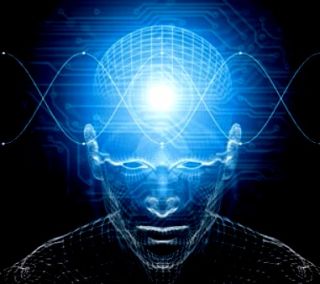https://www.psychologytoday.com/ memories-hide-in-the-brain-can-be-retrieved
THE BASICS

Source: Geralt/Pixabay
Unconscious fear-related memories can remain totally hidden from your conscious mind, yet they still have the ability to dramatically affect everyday behavior and emotions. Luckily, groundbreaking new research from Northwestern University has identified a specific brain mechanism that has the ability to hide traumatic memories in the brain—and also to retrieve them.
The Northwestern researchers led by Jelena Radulovic, MD/PhD, professor in psychiatry and behavioral sciences and pharmacology at Northwestern University Feinberg School of Medicine, found that a process known as “state-dependent” learning contributes to the formation of fear-related memories that are inaccessible through normal cognition and consciousness.
The August 2015 study, “GABAergic Mechanisms Regulated by miR-33 Encode State-Dependent Fear,” appears in the journal Nature Neuroscience. In a press release, Radulovic, who is the principal investigator described the study saying,
,
The findings show there are multiple pathways to storage of fear-inducing memories, and we identified an important one for fear-related memories. This could eventually lead to new treatments for patients with psychiatric disorders for whom conscious access to their traumatic memories is needed if they are to recover.
“State-dependent” memory implies that returning to the particular place, mindset, activity, or drug-induced state in which the memory was initially encoded may be the only way to access these subconscious memories and bring them into conscious awareness.
State-dependent memories can be positive or negative. In many cases, traumatic or stressful experiences are buried from consciousness as a protective mechanism. Inadvertent or unexpected stimuli linked to the state-dependent memory can trigger acute flashbacks that are often the hallmark of post-traumatic stress disorder (PTSD).
Researchers believe this process is a neural defense mechanism designed to protect the psyche of an individual from being incapacitated by fear-inducing memories. However, if suppressed memories aren’t coaxed out of hiding and brought to the surface, they often lead to debilitating psychological problems, such as anxiety, depression, PTSD, or dissociative disorders.
Scientists Create and Retrieve Traumatic Unconscious Memories in Mice
For this experiment, the Northwestern scientists infused the hippocampus of mice with a drug called gaboxadol that stimulates extra-synaptic GABA receptors. “It’s like we got them a little inebriated, just enough to change their brain state,” Radulovic said.
In a process of classical conditioning, the mice were put in a “Skinner box” and given a mild and brief electric shock. When the mice were returned to the same box the next day, they were allowed to move freely and didn’t exhibit fear. This indicated that they didn’t recall the earlier shock in the same box and were fearless
However, when scientists infused the mice with more gaboxadol and returned them to the box, they froze in place, which was a sign that they were fearful and anticipating another shock. “This establishes when the mice were returned to the same brain state created by the drug, they remembered the stressful experience of the shock,” Radulovic said.
The experiment shows that when the extra-synaptic GABA receptors were activated with the drug, they changed the way the stressful event was encoded. In the drug-induced state, the brain engaged completely different molecular pathways and neuronal circuits to store the memory as being fear-related.
Most memories are stored in distributed brain networks including the cortex, and can easily be accessed by consciously recalling an event. However, when the mice were in a different brain state induced by gaboxadol, the stressful event activated subcortical memory regions of the brain and hid the memories in the subconscious.
“It’s an entirely different system even at the genetic and molecular level than the one that encodes normal memories,” said lead study author Vladimir Jovasevic, who worked on the study when he was a postdoctoral fellow in Radulovic’s lab. More specifically, this different system is regulated by a small microRNA, miR-33, and may be the brain’s protective mechanism for creating a type of amnesia when the memory of an abusive or traumatic event is so overwhelming it needs to be blocked from consciousness.
My Personal Experience With State-Dependent Fear-Based Memories
In a recent Psychology Today blog post, “Cortisol and Oxytocin Hardwire Fear-Based Memories,” I wrote about intense state-dependent fear-related memories that became hardwired deep within my brain after being beaten up by three guys near my New York City apartment. In order to get over these fear-inducing memories, I returned repeatedly to the same bloodied slab of concrete where I had been attacked under safely controlled conditions and re-encoded the fear-based state-dependent memories and neutralized their crippling power.article continues after advertisement
Coincidentally, the inspiration for that post came from a study that was also led by Jelena Radulovic. Back in 2013, Radulovic discovered that one function of oxytocin is to strengthen social memory in a specific region of the brain.
She also discovered that if an experience is especially painful or distressing that oxytocin intensifies hardwiring of the negative memory. In a press release Radulovic said, “By understanding the oxytocin system’s dual role in triggering or reducing anxiety, depending on the social context, we can optimize oxytocin treatments that improve well-being instead of triggering negative reactions.”
I was excited to read about the new study by Radulovic this morning. For this study, Radulovic and her colleagues at Northwestern Medicine, have discovered for the first time the mechanism by which state-dependent learning renders stressful fear-inducing memories consciously inaccessible by studying mice.
The Yin-Yang of Glutamate and GABA
I’ve been fascinated with the role of glutamate and GABA in controlling anxiety and hardwiring fear-related memories ever since I began competing in extreme ultra-endurance athletic competitions in my 20s… and again after being mugged in 2003. On p. 279 of The Athlete’s Way: Sweat and the Biology of Bliss I write about glutamate saying,article continues after advertisement
Any traumatic memory is automatically stored in your implicit, unconscious memory … There is a protein called glutamate that sears synapses together in any unique or traumatic experience. This is how fear conditioning is hardwired. Glutamate bonds are hard to dissolve.
Specific trauma, like getting mugged, is held in your conscious mind but also in you nonthinking cerebellum as part of your personal unconscious. For weeks after being mugged, if I passed the park I had a visceral physiological response of sweaty palms and elevated heart rate. This fear was bottom-up processing. I needed to tackle it from the top-down to change it. That is what being human is about. We can get on top of our animal instincts and shape ourselves.
Although I wrote the above passage over a decade ago, the ideas remain scientifically sound. That said, the latest research by Radulovic offers exciting new clues on the neurobiological process of burying fear-based memories in the subcortical regions of our brain and how the unconscious mind works.

Source: Luathapdan/Labeled for Reuse
Based on these new findings, the best way to access unconscious memories appears to be tapping into the state-dependent system by returning the brain to the same state of consciousness, mindset, or physically returning to the specific environment where the memory was initially encoded.
As Radulovic explains, two amino acids, glutamate and GABA are the yin and yang of the brain, directing its emotional tides and controlling whether nerve cells are excited or inhibited (calm).
Under normal conditions the system is balanced. But when we are hyper-aroused and vigilant, glutamate surges. Glutamate is the primary chemical that helps store memories in our neuronal networks. On the flip side, GABA calms you down, helps you sleep, and inhibits the excitable potential of glutamate to run wild.article continues after advertisement
The most commonly used tranquilizing drug, benzodiazepine, activates GABA receptors in our brains. Apparently, there are two kinds of GABA receptors according to the latest Northwestern findings. One kind, synaptic GABA receptors, works in tandem with glutamate receptors to balance the excitation of the brain and create a state of homeostasis during times of distress.
The other population, extra-synaptic GABA receptors, work as independent agents. These receptors actually ignore glutamate. Instead, they focus internally and adjust brain waves and mental states by monitoring the levels of internal chemicals, such as GABA, sex hormones, and micro RNAs.
According to the researchers, these extra-synaptic GABA receptors alter the brain’s state and have the potential to make you “aroused, sleepy, alert, sedated, inebriated or even psychotic.” However, the Northwestern scientists discovered another critical role of these receptors…they also help encode memories of a fear-inducing event and then store them away, hidden from consciousness. This is a groundbreaking discovery. In a press release, Radulovic said,
The brain functions in different states, much like a radio operates at AM and FM frequency bands. It’s as if the brain is normally tuned to FM stations to access memories, but needs to be tuned to AM stations to access subconscious memories. If a traumatic event occurs when these extra-synaptic GABA receptors are activated, the memory of this event cannot be accessed unless these receptors are activated once again, essentially tuning the brain into the AM stations.
Radulovic points out that it’s often difficult for therapists treating people with buried fear-based memories because patients often can’t remember traumatic experiences that may be the root cause of their anxiety symptoms.
Conclusion: To Retrieve State-Dependent Memories Return to the Same State
Do you have any fear-based memories that seem deeply buried in your brain that surface into conscious awareness under specific circumstances? What triggers the retrieval or recollection of these unconscious memories that are hiding in your brain?
The new findings by Radulovic et al suggest that in response to traumatic stress, some individuals activate the glutamate system to store memories while others activate the extra-synaptic GABA system. Activating the extra-synaptic GABA system makes traumatic memories inaccessible unless state-dependent triggers are introduced.
For many people who suffered childhood abuse or neglect, unconscious memories are buried deep within subcortical brain regions and can’t be accessed consciously. This exciting new research could be a catalyst for interventions that help bring unconscious memories to the surface so they can be dealt with and resolved consciously.
If you’d like to read more on this topic, check out my Psychology Today blog posts:
- “Targeting GABA Neurons Offers Clues for Boosting Resilience“
- “Neuroscientists Discover the Roots of ‘Fear-Evoked Freezing”
- “Cortisol and Oxytocin Hardwire Fear-Based Memories“
© 2015 Christopher Bergland. All rights reserved.
Follow me on Twitter @ckbergland for updates on The Athlete’s Way blog posts.
The Athlete’s Way ® is a registered trademark of Christopher Bergland
.
,
